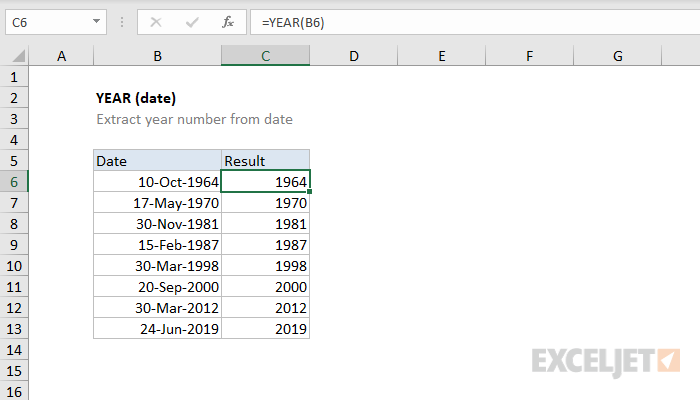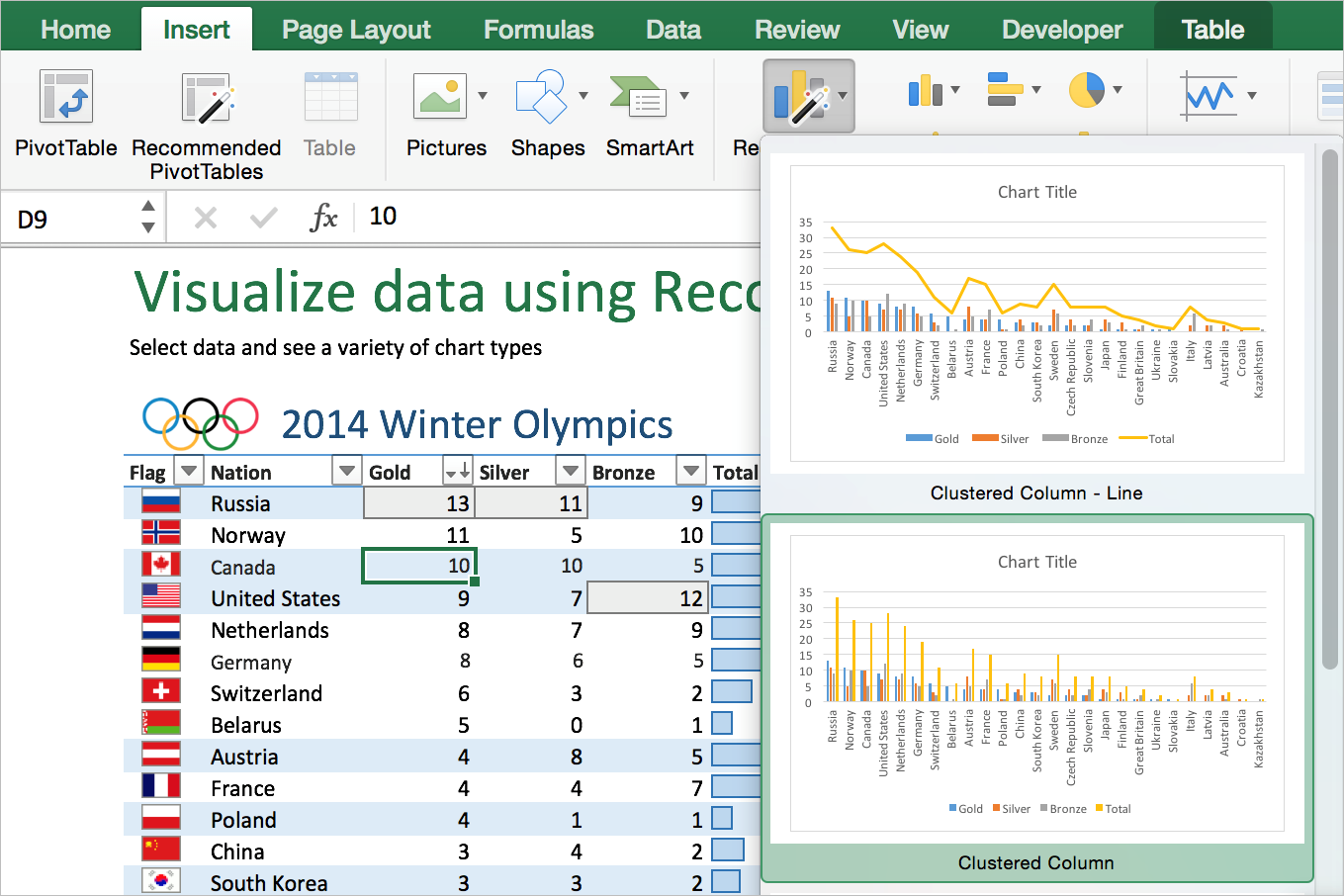Datedif Function Excel For Mac 2016
Jun 20, 2017 Okat, Microsoft states that the DATEDIF function 'Calculates the number of days, months, or years between two dates. Warning: Excel provides the DATEDIF function in order to support older workbooks from Lotus 1-2-3. The DATEDIF function may calculate incorrect results under certain scenarios. Excel 2016 has over 461 functions. The DatedIf function was created many years ago in order to provide support for older workbooks from Lotus 1-2-3. So even though it still works, it doesn’t show up in the list of functions. However, instead of typing specific dates, you can also use the TODAY function inside the formula. When you use the TODAY function, Excel uses your computer's current date for the date. Keep in mind this will change when the file is opened again on a future day. Please note that at the time of this writing, the day was October 6, 2016. In Microsoft Excel 2007, with a 97-2003 version spreadsheet file- The cells in column G are formatted as a date (type: 3/14/01). The value of G13 is 6/10/2004 and the value of G14 is 7/12/2004 - showing as 6/10/04 and 7/12/04. The Excel DATEDIF function returns the difference between two date values in years, months, or days. The DATEDIF (Date + Dif) function is a 'compatibility' function that comes from Lotus 1-2-3. For reasons unknown, it is only documented in Excel 2000, but you can use it in your formulas in all Excel.
- Datedif Mac Excel
- Free Excel For Mac
- Datedif Function Excel 2016
- Datedif Not In Excel 2016
- Datedif Excel 2016 Missing
- How To Get Datedif Function In Excel
- Datedif Function Excel For Mac 2016 Free
This Excel tutorial explains how to use the Excel DATEDIFF function with syntax and examples.
Description
The Microsoft Excel DATEDIFF function returns the difference between two date values, based on the interval specified.
The DATEDIFF function is a built-in function in Excel that is categorized as a Date/Time Function. It can be used as a VBA function (VBA) in Excel. As a VBA function, you can use this function in macro code that is entered through the Microsoft Visual Basic Editor.
Syntax
The syntax for the DATEDIFF function in Microsoft Excel is:
Parameters or Arguments
The interval of time to use to calculate the difference between date1 and date2. Below is a list of valid interval values.
| Interval | Explanation |
|---|---|
| yyyy | Year |
| q | Quarter |
| m | Month |
| y | Day of year |
| d | Day |
| w | Weekday |
| ww | Week |
| h | Hour |
| n | Minute |
| s | Second |
Returns
The DATEDIFF function returns a numeric value.
Applies To
- Excel for Office 365, Excel 2019, Excel 2016, Excel 2013, Excel 2011 for Mac, Excel 2010, Excel 2007, Excel 2003, Excel XP, Excel 2000
Example (as VBA Function)
Winact 1.4.1.exe. The DATEDIFF function can only be used in VBA code in Microsoft Excel.
Let's look at some Excel DATEDIFF function examples and explore how to use the DATEDIFF function in Excel VBA code:
For example, you could use the DATEDIFF function in VBA code and create the following function:

Based on the spreadsheet above, the following Excel function would return the following values:
DATEDIF is a hidden function in Excel. As the name suggests the job of this function is to calculate the difference between two given dates.
I have referred this function as hidden because, for some reason Microsoft has decided not to document this function. And because of this you won’t find this function in the Formula Tab.
To verify this, try and type =DATE in any cell. You will see, Excel enlists all the functions that start with the word “date” but it doesn’t shows DATEDIF.
Please note that, DATEDIF Function in Excel is totally different from the DATEDIFF (Notice the extra ‘F’) Function in VBA.
Syntax of Excel DATEDIF function
Learning the syntax of DATEDIF function is very important. Because for applying this function you need to know its complete syntax as Excel won’t provide you any help on this.
The Syntax of DATEDIF function is as follows:
=DATEDIF(Start_Date, End_Date, Unit)Here, ‘Start_Date’ is the starting date of the period that you wish to calculate. ‘Start_Date’ can be entered as a string within double quotes (like: “10/10/2013”), it can also be entered as a serial number, as Excel internally treats dates as serial numbers (for example: the number 41557 represents “10/10/2013”, if you are using the 1900 date system), or you can also supply the dates as a formula (like: =DATE(2013,10,10)).
:max_bytes(150000):strip_icc()/EntireFormula-5bdf19dfc9e77c00265cf0d5.jpg)
‘End_Date’ is the last date of the period that you wish to calculate. Similar to ‘Start_Date’, ‘End_Date’ can also be entered as a string, number or a formula.
‘Unit’ specifies the interval by which you want the difference to be returned. There are 6 ‘Units’, which are described as under:
| UNIT | RETURNS |
|---|---|
| “Y” | Returns the period difference as complete years. |
| “M” | Returns the period difference as complete months. |
| “D” | Returns the number of days in the period. |
| “MD” | Returns the difference between the days in ‘Start_Date’ and ‘End_Date’. Here the months and years of the dates are ignored. |
| “YM” | Returns the difference between the months in ‘Start_Date’ and ‘End_Date’. Here the days and years of the dates are ignored |
| “YD” | Returns the difference between the days of ‘Start_Date’ and ‘End_Date’. Here the years of the dates are ignored. |
How to Use Excel DATEDIF function
Now, let’s understand how to use the DATEDIF function in excel.
Objective: Let’s, consider our objective is to find the number of days from 14 April 1912 (The day on which Titanic Sank) till today’s date.
So, we will try to apply the DATEDIF formula.
‘Start_Date’: In this case our ‘Start_Date’ will be 14 April 1912.
‘End_Date’: End_Date will be today’s date. So, instead of entering today’s date manually, we will use the Today() function.
‘Unit’: As we want to find the number of days between the period. So, the ‘Unit’ will be “d”.
This formula results in 36910 days.
Some Important points about DATEDIF Formula
- DATEDIF throws a #NUM error is Start_Date is greater than ‘
End_Date’. - It throws a #Value error if anyone of the date arguments is invalid.
- It also throws a #NUM error if the ‘
Unit’ is invalid.

Few Examples of DATEDIF Function
Now, let’s move to some examples of the DATEDIF function:
Example 1: Write a formula to calculate the total number of years from 1/1/2001 to 1/1/2007.
This can be simply done by using the below formula:
And the answer is 6.
Example 2: Write a formula to calculate the number of complete months from 1/1/2001 to 1/1/2007.
The formula that we are going to user here is:
=DATEDIF('01/01/2001','01/01/2007','m')The answer is 72 i.e. 6 years X 12 months in each year =72
Example 3: Write a formula to calculate your age in years, months and days.
For finding the age we will need birth date of a person. In our example we will take the birth date as 12/12/1986
So, we will use a formula
=DATEDIF('12/12/1986',TODAY(),'y')&' years,'&DATEDIF('12/12/1986',TODAY(),'ym') &' month(s), '&DATEDIF('12/12/1986',TODAY(),'md')&' Days'The need to supress zero values
In Example 3 we have seen how DATEDIF function can be used of calculating age. However, if the number of years and/or months is 0, then the resultant of the formula looks strange.
Datedif Mac Excel
Okay, I will try to explain this in detail.
Consider that we have to calculate age of a baby born on 12/12/2012.
So, will try to use the formula:
=DATEDIF('12/12/2012',TODAY(),'y')&' years,'&DATEDIF('12/12/2012',TODAY(),'ym') &' month(s), '&DATEDIF('12/12/2012',TODAY(),'md')&' Days'See, what the result of this formula is.
Doesn’t 0 years looks odd.
So, to fix this issue we will use the IF function along with Excel DATEDIF.
And the new formula will be:
=IF(DATEDIF('12/12/2012',TODAY(),'y') = 0, ', DATEDIF('12/12/2012',TODAY(),'y') &' years,')&IF(DATEDIF('12/12/2012',TODAY(),'ym') = 0, ', DATEDIF('12/12/2012',TODAY(),'ym') &' month(s), ')&IF(DATEDIF('12/12/2012',TODAY(),'md') = 0,',DATEDIF('12/12/2012',TODAY(),'md')&' Days')I think now you all would agree, that the output of this new formula looks better than the old one.
Free Excel For Mac

Is DATEDIF a safe function?
Datedif Function Excel 2016
I know this is a bit strange but many Excel Gurus say that it’s not good to use DATEDIF in your important workbooks. As this is an undocumented function and going forward there may be a chance that Microsoft may remove support for this function.
So, what’s the alternative to DATEDIF?
Datedif Not In Excel 2016
The alternative to Excel DATEDIF would be a User-defined function (UDF) that internally uses the VBA DATEDIFF function:
This UDF accepts three parameters:
Datedif Excel 2016 Missing
Start_Date: The days from which the period begins.End_Date: It is the last date of the period that you wish to calculate.Unit: It specifies the interval by which you want the difference. Here the unit accepts following values.
| Value | Description |
|---|---|
| YYYY | Year |
| Q | Quarter |
| M | Month |
| Y | Day of year |
| D | Day |
| W | Weekday |
| WW | Week |
| H | Hour |
| N | Minute |
| S | Second |
How To Get Datedif Function In Excel
Example 4: Using this UDF to find the number of days between “01/01/2010” and “01/01/2012”.
Datedif Function Excel For Mac 2016 Free
To do this we will use the formula:
=xlDATEDIF('01/01/10','01/01/12','d')And it results into 730.
So, this was all about Excel DATEDIF function. Do let me know in case you come across any issues while using this function.